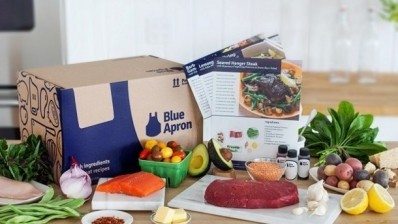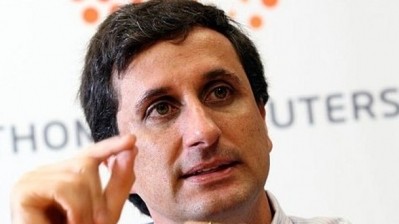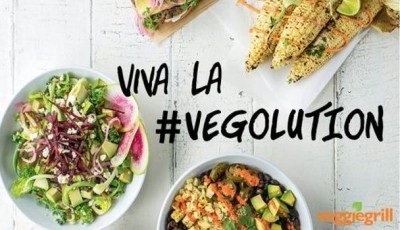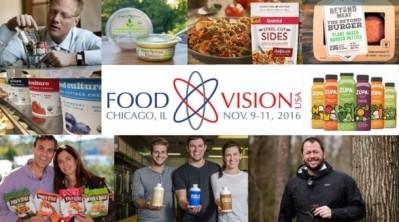TSG Consumer Partners: Many of the big CPG companies are effectively outsourcing innovation

There are a few larger players still out there in the natural and organic space, such as Hain Celestial, but many of the bigger players in this category have been snapped up in recent years, meaning that big CPG brands are now turning their attention to far smaller brands, and making investments – or full-blown acquisitions - at a much earlier stage, says Pierre LeComte, managing director at investment group TSG Consumer Partners.
“Many of the big CPG companies are effectively outsourcing innovation, and using them [smaller companies in which they invest/acquire] to move into new categories and channels," he told FoodNavigator-USA.
“They’re investing for the future knowing that as these brands are very small, they may not make a financial impact for five or 10 years or even longer, but this is the only way to position themselves for success many years down the road.”
Of course, the value of this strategy “depends what these companies are trying to get out of it," he said. “The real question now is are they investing to get access to new brands or new food opportunities, or are they investing for economic return, and the answer to that will depend on the company in question. Certainly many of them have decided that they don’t want to wait until a business is 100% ready for a sale [before making an investment].”
The changing food investment landscape
One thing that is undeniable, he added, is that the pace of change has “accelerated over the past few years for lots of reasons, partly because of increased access to capital, and partly due to the ability to proliferate brands earlier through retail and also online… There is just a lot more early stage venture capital that wasn’t really available to the sector even five years ago; more and more funds have sprung up overnight.
“The strategic acquirers, like Hershey and Mondelez International, are buying businesses earlier and earlier than they ever did before, so folks are saying, let’s invest earlier as there may be a chance to sell when this business is only $20m in sales versus having to wait until it gets to $80m or $90m, which is where we were 10 years ago. … So, there are opportunities to put investment capital to work earlier.”
There have also been a lot more entrepreneurial operators getting into the investment side as well, noted LeComte, citing Powerplant Ventures, a venture fund set up by ZICO founder Mark Rampolla and others to invest in plant-based businesses.
“That said, I think that the jury is still out as to that early stage investment strategy, as there are bound to be more misses than hits at that early stage than there are at the later stages of investing where a firm such as TSG can make an impact."
Trends to watch: Proteins, functional beverages, plant-based foods
So what trends is LeComte watching, and what does he make of the recent flurry of investment in food-tech businesses promising to fix the broken food system or replace meat or dairy protein with more sustainable alternatives?
“Protein snacks are a strong area, plus alternative functional beverages,” said LeComte. “Plant-based foods are also attracting a lot of investment capital, although I wonder whether some of the valuations that these companies are receiving will pan out.
“The question really is which of these businesses has the scale and momentum to really develop into a size that will make a successful investment down the road versus something that requires significant capital but may not scale."
Food tech investments
As for food-tech investments, he said: “Many of the food tech companies have got investment capital from venture capital firms out of Silicon Valley rather than the traditional CPG investors; it’s just a different risk reward profile. They are investing very small stakes and waiting to see what happens, whereas in our world, typically you find one institutional investor that puts all the capital in for a brand and helps guide it to a successful liquidity event down the road.
“That’s a very different model to the world where you’re one of 10 investors and if you win, that’s great and you lose, so be it, as you’ve got 10 other investments that might pay off.”
He added: “The revenue profile on some of these food tech companies is quite small so the money may be more an investment in the science and technology behind the business than the branded sales. So the key question in this case is, who is the buyer of these businesses? It might be very different to buyers of traditional high-growth CPG brands; it could even be more of an IPO exit, which is very rare in the CPG world.”
Meal kits: We need to really understand the path to profitability
As for the rapid growth of direct-to-consumer food delivery businesses, notably those in the exploding meal-kit space, he said, it is too early to say, although there are challenges associated with the business model
“They’re certainly attracting a lot of attention, and convenience is a big play today for sure, but the challenge with many of these models is that they have yet to sustain a relative degree of profitability, and customer acquisition costs can be significant and in some cases can increase over time. There is also a high degree of churn.
“The challenge is that many of them haven’t been in operation long enough to really ascertain the lifetime value of a customer, so it may take time more time and additional capital to really determine how long you can keep a customer, and at what point do they actually pay back.
“The most successful ones will work out how to get the customer to pay back within one or two orders, versus a multi-month or year cycle.
“We’re certainly open to looking at these kinds of business [as investment opportunities] but we’d need to really understand the path to profitability and the economics of the customer lifecycle.”
“We focus very much on high growth businesses that are emerging as the number one or two player in their category, typically in the better for you segments of the food and beverage market.
“We’re looking at businesses that are doing at least $10-20m in sales and growing rapidly, so we’re not going to invest in start-ups necessarily, but businesses that have already achieved some degree of customer traction and are demonstrating real velocity where they are selling today. So there is an opportunity for us to help that company ramp up to $20m, to $60m, $70m or $80m and beyond over the new few years.
“We’re targeting investing equity checks of $15m and up, but we can go much larger than that and potentially do transactions of several hundred million dollars.
“Our average hold is around five years, but it’s really dictated by the opportunity in the business. Many times if a business grows very rapidly, companies start asking the founders and investors like us when there is an opportunity to acquire the business and then that typically signals it’s the right time to think about exiting the investment, and that could be two or three years in, so it just depends…"
Pierre LeComte, managing director, TSG Consumer Partners
Interested in the changing food investment landscape? Head to Food Vision USA in Chicago in November and hear what Honest Tea's Seth Goldman, General Mills 301 INC's John Haugen, CircleUp's Jason Starr, and Sonoma Brands' Jon Sebastiani think...












